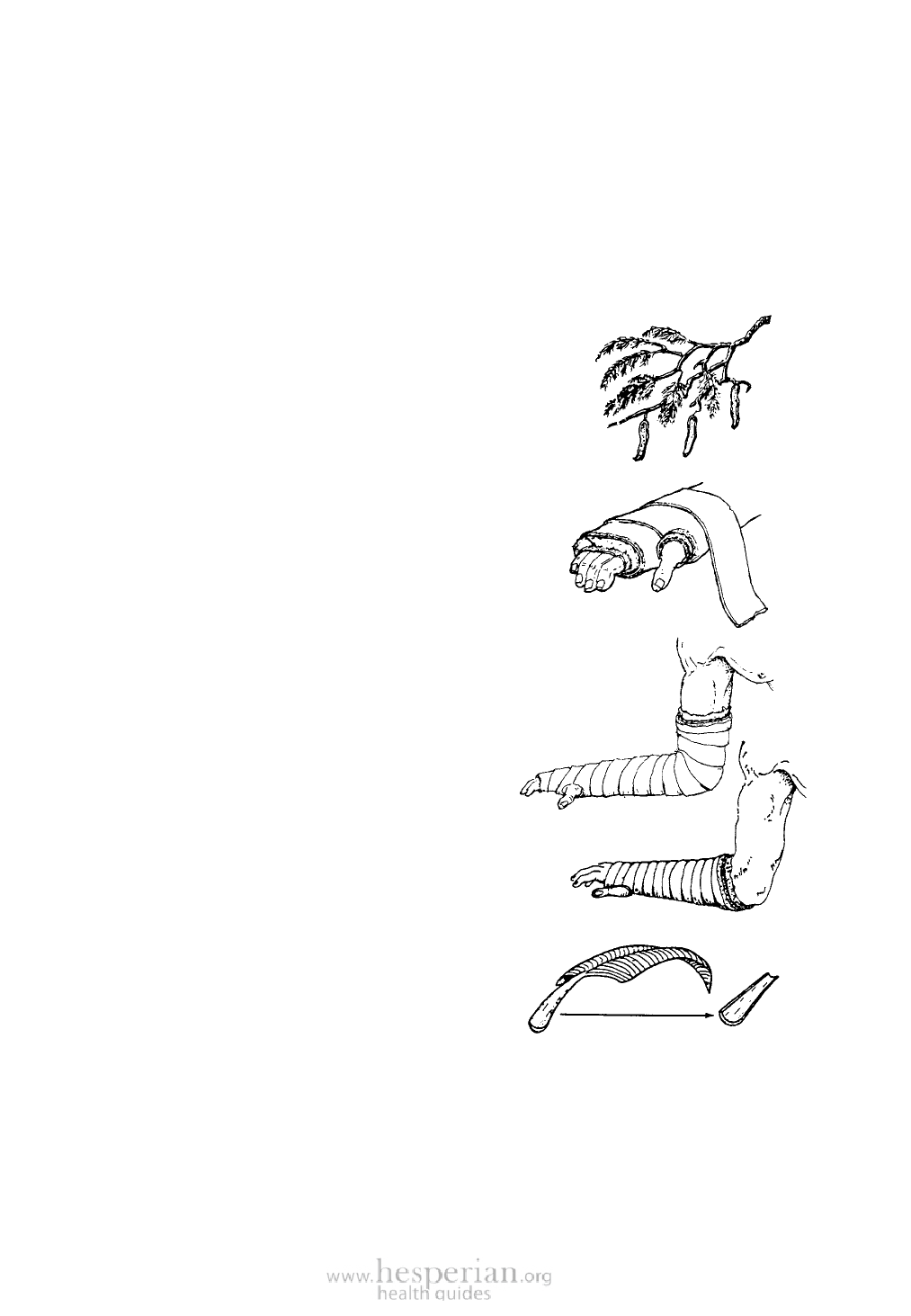
14 Where There Is No Doctor 2011
HOMEMADE CASTS—
FOR KEEPING BROKEN BONES IN PLACE
In Mexico several different plants such as tepeguaje (a tree of the bean family) and
solda con solda (a huge, tree-climbing arum lily) are used to make casts. However, any
plant will do if a syrup can be made from it that will dry hard and firm and will not irritate
the skin. In India, traditional bone-setters make casts using a mixture of egg whites
and herbs instead of a syrup made from plant juices. But the method is similar. Try out
different plants in your area.
For a cast using tepeguaje: Put 1 kilogram of the bark
into 5 liters of water and boil until only 2 liters are left. Strain
and boil until a thick syrup is formed. Dip strips of flannel or
clean sheet in the syrup and carefully use as follows.
Make sure the bones are in a good position (p. 98).
Do not put the cast directly against the skin.
Wrap the arm or leg in a soft cloth.
Then follow with a layer of cotton or wild kapok.
Finally, put on the wet cloth strips so that they form a
cast that is firm but not too tight.
Most doctors recommend that the cast cover
the joint above and the joint below the break, to
keep the broken bones from moving.
T his would mean that, for a broken wrist, the
cast should cover almost the whole arm, like this:
L eave the finger tips uncovered so that you
can see if they keep a good color.
However, traditional bone-setters in China
and Latin America use a short cast on a simple
break of the arm saying that a little movement of
the bone-ends speeds healing. Recent scientific
studies have proven this to be true.
A temporary leg or arm splint can be made of
cardboard, folded paper, or the thick curved stem
of dried banana leaf, or palm leaf.
CAUTION: Even if the cast is not very tight when you put it on, the broken limb may
swell up later. If the person complains that the cast is too tight, or if his fingers or toes
become cold, white, or blue, take the cast off and put on a new, looser one.
Never put on a cast over a cut or a wound.